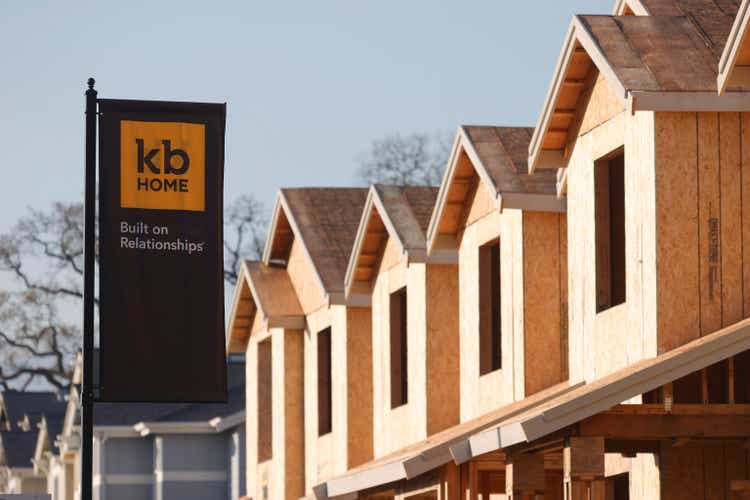KB Home: An Ugly Q3 Earnings Report
Summary
- I have argued that the housing market hit a wall in July/August, and KB Home’s Q3 2023 results support this claim.
- Revenues fell 13.6% YoY and 10% from its FY Q2. Operating income was destroyed, down 45% YoY, with net income down 41% YoY.
- Interestingly, the culprit that torpedoed KBH’s numbers was price cutting. Deliveries were down 7% YoY and 8% from Q2. But the average selling price was cut 8.3%.

Justin Sullivan
The following analysis on KB Home (NYSE:KBH) is from the latest issue of my Short Seller’s Journal.
KBH’s FY Q3 ended August 31st, which means the numbers captured the trend in new home sales over the summer (June, July, August) based on contracts signed in the late spring through mid-summer. I have argued that the housing market hit a wall in July/August, and KBH’s results support this claim.
Revenues fell 13.6% YoY and 10% from its FY Q2. Operating income was destroyed, down 45% YoY, with net income down 41% YoY. Net income benefited from a jump in equity income from unconsolidated joint ventures and a big drop in the GAAP income tax, both non-cash and both non-factors in the cash profitability of KBH. Interestingly, the culprit that torpedoed KBH’s numbers was price cutting. Deliveries were down 7% YoY and 8% from Q2. But the average selling price was cut 8.3%.
While both factors affect profitability, cutting prices while costs continue rising hammer margins. KBH’s operating margin fell to 11% from 17% YoY. While new orders rose and the value of new orders, the value of the backlog was hammered 35.4% YoY and 20.3% QoQ. With respect to the new orders, I expect that the cancellation rate cited by Redfin that I referenced above will erase a material percentage of those new orders.
The company has not released a 10-Q yet, so I can’t look at the cash economics of the quarter (cash from operations). The company pegged its full-year guidance at the high end of the guidance given at the end of Q2 ($6.31 billion in revenues for the full year). We’ll see about that.
Despite the revenue and net income “beat” plus management’s attempt to put lipstick on the pig with positive guidance and a reference to the share buyback program, the stock was drilled for 5%. It affected all of the homebuilders as well. The stock is breaking down quickly:

The stock has dropped below all of the key moving averages except the 200-DMA, which was at $43 on Friday. Once it falls below the 200-DMA, the real fun will begin. It will also mean that investors are finally accepting the fact that the new home sales market is heading south. Think about this: absent the aggressive price cutting in Q3, deliveries and new orders would have been a disaster. As it is, the price cuts likely pulled forward a material amount of new orders into the quarter, a portion of which will cancel.
The stock is technically oversold using the RSI and MACD. If the 10yr yield falls over the next couple of weeks, it might stimulate homebuilder buying by hedge fund algos. But liquidity continues to drain from the banking system, while the Fed postures to keep rates higher than expected for longer than expected. One more thing. At some point, there will be big inventory write-downs. KBH has already slashed prices for four quarters consecutively. In Q3, prices were cut 8% YoY and 4% from Q2. It will have to continue slashing prices, particularly as unsold homes from canceled contracts become spec homes that just sit collecting cobwebs.
Editor's Note: The summary bullets for this article were chosen by Seeking Alpha editors.
Disclaimer: Investing carries risk. This is not financial advice. The above content should not be regarded as an offer, recommendation, or solicitation on acquiring or disposing of any financial products, any associated discussions, comments, or posts by author or other users should not be considered as such either. It is solely for general information purpose only, which does not consider your own investment objectives, financial situations or needs. TTM assumes no responsibility or warranty for the accuracy and completeness of the information, investors should do their own research and may seek professional advice before investing.

